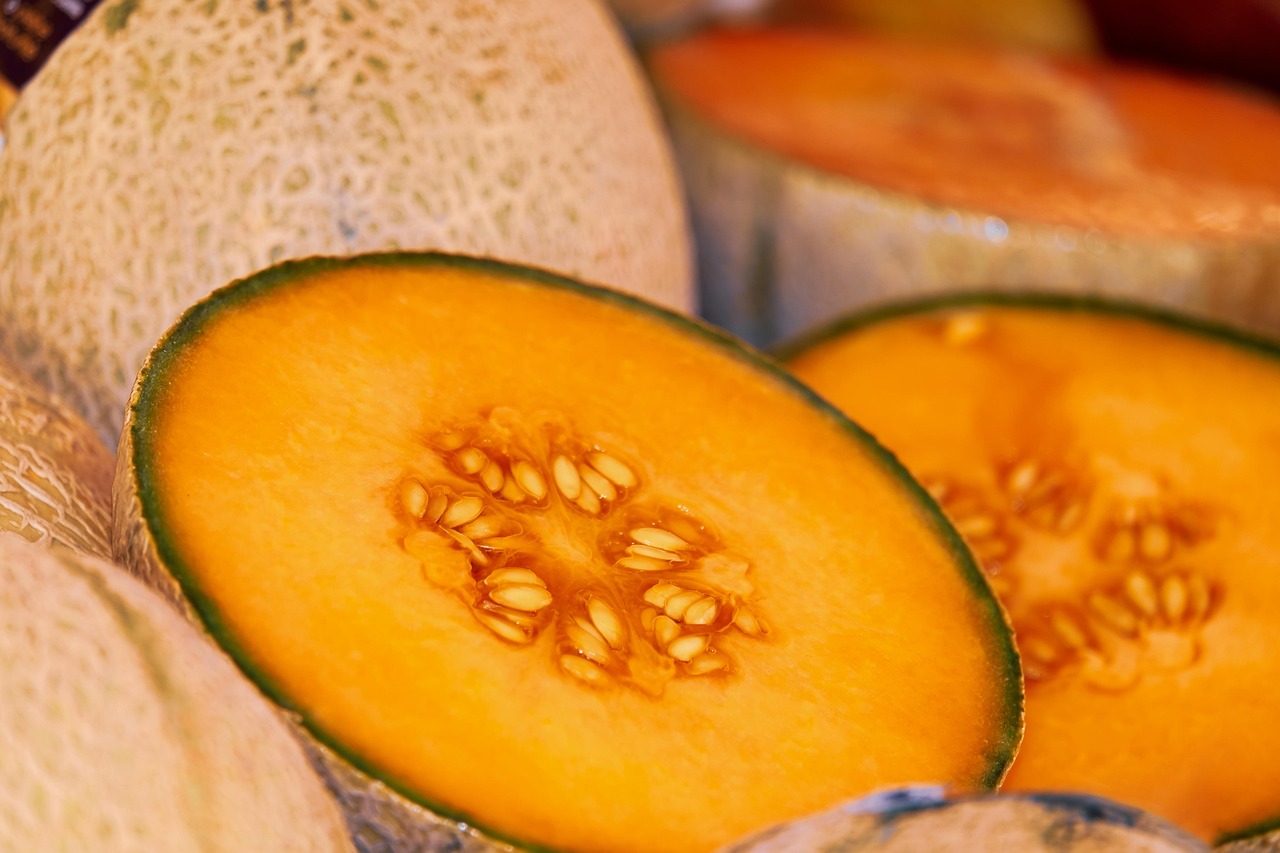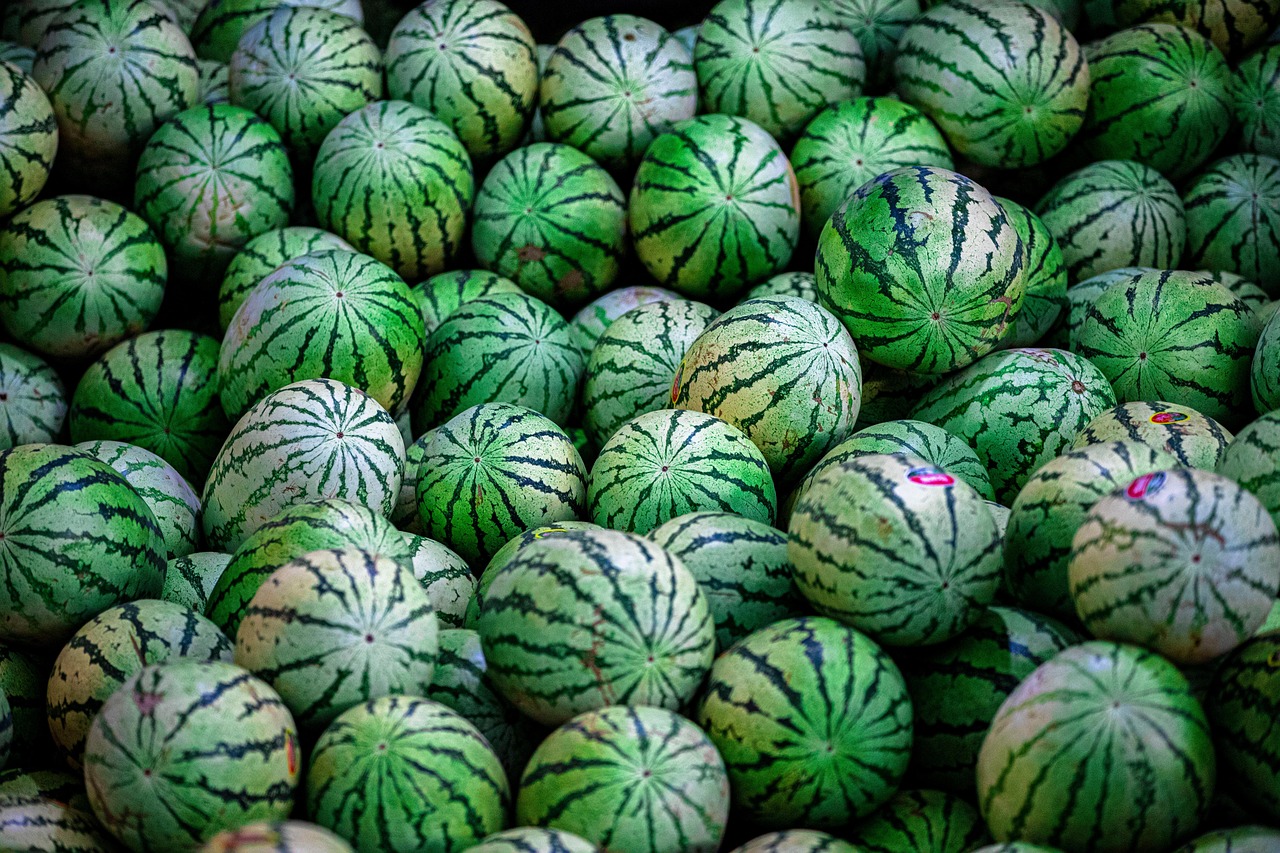Troubleshooting issues with mini melons, such as snapped stems and other growing problems, often involves identifying environmental stressors, improper care techniques, or pest infestations. Regular monitoring and prompt intervention can help restore plant health and encourage fruitful growth.
Understanding Mini Melons

Mini melons, also known as personal-sized melons, have gained popularity due to their sweet taste and manageable size. These varieties include cantaloupes, honeydews, and specialty melons that are perfect for individual servings. Growing mini melons can be rewarding, but they come with their own set of challenges. Understanding the requirements and common issues can significantly improve your success rate.
Mini melons thrive in warm environments with plenty of sunlight. They require well-drained soil rich in organic matter. Regular watering is essential, but overwatering can lead to root rot. Additionally, these plants can be susceptible to various pests and diseases, which can impact their growth and fruiting.
Common Issues with Mini Melons
Several factors can contribute to the poor growth of mini melons. Recognizing these issues early on can prevent further damage. Below are some of the most prevalent challenges faced by gardeners:
- Snapped Stems: Often caused by wind exposure or physical damage during handling.
- Pest Infestations: Aphids, spider mites, and cucumber beetles are common culprits.
- Nutrient Deficiencies: Lack of essential nutrients can stunt growth and reduce fruit quality.
- Improper Watering: Both overwatering and underwatering can lead to stress in plants.
- Diseases: Fungal infections and bacterial wilt can severely affect plant health.
Identifying Snapped Stems
Snapped stems are a common issue that affects the health of mini melon plants. This problem may arise from various sources, including environmental conditions and handling practices. Understanding the symptoms and causes is crucial for effective management.
When a stem snaps, it disrupts the flow of nutrients and water to the plant. This interruption can lead to wilting or even death if not addressed promptly. The primary reasons for snapped stems include:
- Wind Damage: Strong winds can break delicate stems, particularly in young plants.
- Physical Handling: Rough handling during transplanting or maintenance can cause injury.
- Heavy Fruit Load: Excessive weight from developing fruit can stress stems beyond their capacity.
Prevention Techniques
Taking preventive measures can significantly reduce the likelihood of stem snapping and other growth issues. Here are some effective strategies:
- Provide Adequate Support: Use stakes or trellises to support growing plants and prevent stem breakage.
- Avoid Overcrowding: Ensure adequate spacing between plants to reduce competition and allow for better air circulation.
- Monitor Weather Conditions: Protect plants from strong winds by using barriers or relocating them if necessary.
- Handle with Care: Be gentle when working with plants to minimize physical damage during gardening tasks.
By following these practices, gardeners can enhance the resilience of their mini melons against environmental stressors and improve overall plant health. Proper care and attention will help ensure a bountiful harvest of sweet, delicious melons.
Addressing Pest Problems
Pests can pose a significant threat to the health of mini melons. Identifying and controlling these pests is essential for maintaining healthy plants. Common pests that affect mini melons include aphids, spider mites, and cucumber beetles.
Aphids
Aphids are small, soft-bodied insects that feed on plant sap. They can rapidly reproduce and create large colonies, leading to stunted growth and yellowing leaves. Signs of an aphid infestation include:
- Curled or distorted leaves
- Sticky residue (honeydew) on leaves and surrounding areas
- Presence of ants, which are attracted to honeydew
To manage aphids, consider the following methods:
- Natural Predators: Introduce ladybugs and lacewings, which feed on aphids.
- Insecticidal Soap: Use insecticidal soap sprays to target aphids directly.
- Neem Oil: Apply neem oil as a natural pesticide to deter aphids.
Spider Mites
Spider mites are tiny arachnids that thrive in hot, dry conditions. They can cause significant damage by sucking the sap from leaves, resulting in stippled or yellowed foliage. Look for fine webbing on the undersides of leaves as an indicator of spider mite presence.
Effective strategies for controlling spider mites include:
- Increase Humidity: Misting plants can create a less favorable environment for spider mites.
- Regularly Inspect Plants: Check for early signs of infestation to catch problems before they escalate.
- Pesticidal Soap or Horticultural Oil: Apply these treatments to control spider mite populations.
Cucumber Beetles
Cucumber beetles are notorious for damaging young plants and can spread diseases like bacterial wilt. They are characterized by their distinct yellow and black striped or spotted appearances. Signs of cucumber beetle activity include:
- Holes in leaves or flowers
- Wilting plants due to disease transmission
Managing cucumber beetles requires a combination of preventive measures and active controls:
- Row Covers: Use floating row covers to protect young plants from beetles.
- Pheromone Traps: Set traps to reduce adult beetle populations in the garden.
- Insecticides: For severe infestations, consider using targeted insecticides as a last resort.
Nutrient Deficiencies in Mini Melons
Nutrient deficiencies can lead to poor growth and reduced fruit quality. Mini melons require a balanced supply of nutrients, including nitrogen, phosphorus, potassium, and micronutrients. Identifying symptoms of deficiencies is vital for timely intervention.
Common Nutrient Deficiencies
The following table outlines some common nutrient deficiencies and their symptoms:
| Nutrient | Symptoms |
|---|---|
| Nitrogen | Yellowing of older leaves, stunted growth |
| Phosphorus | Purple or dark green coloring on leaves, poor fruit development |
| Potassium | Browning leaf edges, weak stems, poor fruit quality |
| Magnesium | Interveinal chlorosis (yellowing between veins), leaf curling |
Taking Action Against Deficiencies
To address nutrient deficiencies effectively, gardeners should consider the following strategies:
- Soil Testing: Conduct soil tests to determine nutrient levels and pH balance.
- Fertilization: Apply balanced fertilizers according to soil test recommendations.
- Add Organic Matter: Incorporate compost or well-rotted manure to improve soil fertility.
By understanding and addressing pest problems and nutrient deficiencies, gardeners can significantly improve the health of their mini melons. Proactive measures will create a thriving environment for these delicious fruits to flourish.

Watering Practices for Mini Melons

Effective watering practices are crucial for the healthy growth of mini melons. Both overwatering and underwatering can lead to various problems, including snapped stems, poor fruit development, and disease susceptibility. Understanding how to properly water mini melons can enhance their resilience and productivity.
Optimal Watering Conditions
Mini melons require consistent moisture, especially during the flowering and fruiting stages. However, it is essential to avoid waterlogged conditions. Here are key points to consider when watering your mini melons:
- Soil Type: Well-draining soil is vital. Sandy loam is ideal as it retains moisture while allowing excess water to drain away.
- Watering Frequency: Water deeply and less frequently rather than shallowly and often. Aim for about 1-2 inches of water per week, depending on weather conditions.
- Time of Day: Water in the early morning to reduce evaporation and allow plants to absorb moisture throughout the day.
Signs of Overwatering and Underwatering
Recognizing the signs of overwatering and underwatering can help you adjust your watering practices effectively. Here are some symptoms to watch for:
Overwatering Symptoms
- Yellowing leaves that may appear droopy
- Root rot, which can lead to a foul smell from the soil
- Mushy or darkened stems
Underwatering Symptoms
- Curling or wilting leaves
- Dry, cracked soil surface
- Stunted growth and reduced fruit size
Managing Soil Health
Healthy soil is the foundation for productive mini melon plants. Improving soil health involves maintaining optimal nutrient levels, structure, and microbial activity. Here are several strategies for managing soil health:
Soil Composition and Structure
The ideal soil for growing mini melons should have a balanced composition of sand, silt, and clay. A well-structured soil allows for proper aeration, drainage, and moisture retention. Consider the following:
- Add Organic Matter: Incorporate compost or well-rotted manure to enhance soil structure and nutrient availability.
- Avoid Soil Compaction: Reduce foot traffic in garden beds to maintain soil structure and prevent compaction.
- Crop Rotation: Practice crop rotation each season to prevent nutrient depletion and control pests.
Microbial Activity
The presence of beneficial microbes in the soil is essential for nutrient cycling and plant health. To promote microbial activity:
- Avoid Chemical Fertilizers: Use organic fertilizers that support microbial populations.
- Mulching: Apply organic mulch around plants to retain moisture and provide a habitat for beneficial organisms.
- Cover Crops: Plant cover crops during the off-season to improve soil health and prevent erosion.
Disease Management Strategies
Diseases can severely impact mini melon growth and yield. Understanding common diseases and implementing prevention strategies is vital for successful cultivation.
Common Diseases Affecting Mini Melons
Mini melons are susceptible to several diseases, including:
- Powdery Mildew: This fungal disease appears as white powdery spots on leaves and can hinder photosynthesis.
- Bacterial Wilt: Caused by bacteria spread by cucumber beetles, this disease leads to wilting and death of plants.
- Fusarium Wilt: A soil-borne fungus that causes yellowing leaves and wilting.
Disease Prevention Methods
To protect mini melons from diseases, consider these best practices:
- Select Resistant Varieties: Choose disease-resistant mini melon varieties when possible.
- Maintain Good Air Circulation: Space plants adequately to promote airflow and reduce humidity around foliage.
- Crop Hygiene: Remove diseased plant material promptly to prevent the spread of pathogens.
By focusing on proper watering practices, soil health management, and disease prevention, gardeners can create an environment conducive to thriving mini melon plants. These strategies will help ensure strong growth and a fruitful harvest.
Enhancing Pollination for Better Yields

Effective pollination is crucial for the successful fruiting of mini melons. Many gardeners may overlook this aspect, but proper pollination ensures the development of quality fruits. Understanding how to enhance pollination can significantly increase your harvest yield.
The Importance of Pollinators
Pollinators, such as bees and butterflies, play a vital role in the reproduction of melon plants. They transfer pollen from male flowers to female flowers, allowing fruit to set. Without adequate pollination, you may notice:
- Fewer fruits developing on the plants
- Small, misshapen melons
- Fruits that drop prematurely
Encouraging Pollinator Activity
To attract and support pollinators in your garden, consider the following strategies:
- Plant a Variety of Flowers: Include a diverse array of flowering plants that bloom at different times to provide a continuous food source for pollinators.
- Avoid Pesticides: Minimize or eliminate the use of chemical pesticides that can harm beneficial insects.
- Create Habitat: Provide natural habitats, such as brush piles or native plant areas, where pollinators can thrive.
Seasonal Care and Maintenance
Proper care throughout the growing season is essential for the health and productivity of mini melons. Different stages in the growth cycle require varying levels of attention and care.
Spring Care
As temperatures rise in spring, it is crucial to prepare the soil and plant seeds or seedlings:
- Soil Preparation: Amend the soil with compost and ensure proper drainage before planting.
- Planting Schedule: Monitor local frost dates to plant seeds at the appropriate time, ensuring soil temperature is above 60°F.
Summer Care
During the summer months, focus on maintaining moisture and monitoring for pests and diseases:
- Consistent Watering: Water deeply to encourage root growth while avoiding waterlogged conditions.
- Pest Monitoring: Regularly inspect plants for signs of pests and take action as needed.
Fall Care
As the growing season comes to an end, preparation for harvest and post-harvest care is critical:
- Harvest Timing: Monitor melons for ripeness, indicated by a slight yellowing at the blossom end and a sweet aroma.
- Post-Harvest Management: Store harvested melons in a cool, dry place to prolong freshness.
Final Thoughts
Troubleshooting issues such as snapped stems, pest infestations, nutrient deficiencies, and disease outbreaks is vital for growing healthy mini melons. By implementing effective watering practices, enhancing soil health, managing pests and diseases, and ensuring proper pollination, gardeners can significantly improve their chances of a successful harvest.
With diligent care and attention to detail throughout the growing season, mini melon plants can produce a bountiful yield of sweet, juicy fruits. Remember that each gardening experience contributes to your knowledge and skills. Embrace the process and enjoy the fruits of your labor!
As you cultivate your mini melons, stay observant and responsive to the needs of your plants. With patience and perseverance, you will enjoy not only the process of gardening but also the delightful rewards that come with it.
